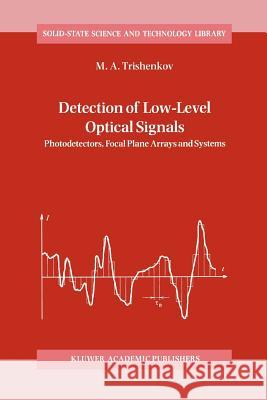Detection of Low-Level Optical Signals: Photodetectors, Focal Plane Arrays and Systems » książka
Detection of Low-Level Optical Signals: Photodetectors, Focal Plane Arrays and Systems
ISBN-13: 9789048148929 / Angielski / Miękka / 2010 / 458 str.
This book is addressed to designers of photodetectors and photodetecting systems, designers of focal plane arrays, charge-coupled devices, specialists in IR technologies, designers of optoelectronic detecting, guiding and tracking systems, systems for IR direction finders, lidars, lightwave communication systems, IR imagers. All these specialists are united by one common purpose: they are all striving to catch the weakest possible optical signal. The most important characteristic of photosensitive devices is their detectivity, which determines the lowest level of optical signal they are able to detect above the noise level. These threshold characteristics define the most important tactical and technical parameters of the entire optoelectronic system, such as its range, resolution, precision. The threshold characteristics of optoelectronic system depend on many of its components; all designers agree, however, that the critically responsible part of the system is the photodetector [1]. By the end of the 1960s the physicists and the engineers were able to overcome many obstacles and to create photodetectors (at least single-element or few-element ones) which covered all the main optical bands (0. 4 ...2,2 ...3, 3 ...5,8 ...14 J. . Lm), carried out the detection almost without any loss (the quantum yield being as high as 0. 7 ...0. 9), and reduced the noise level to the lowest possible limit.











